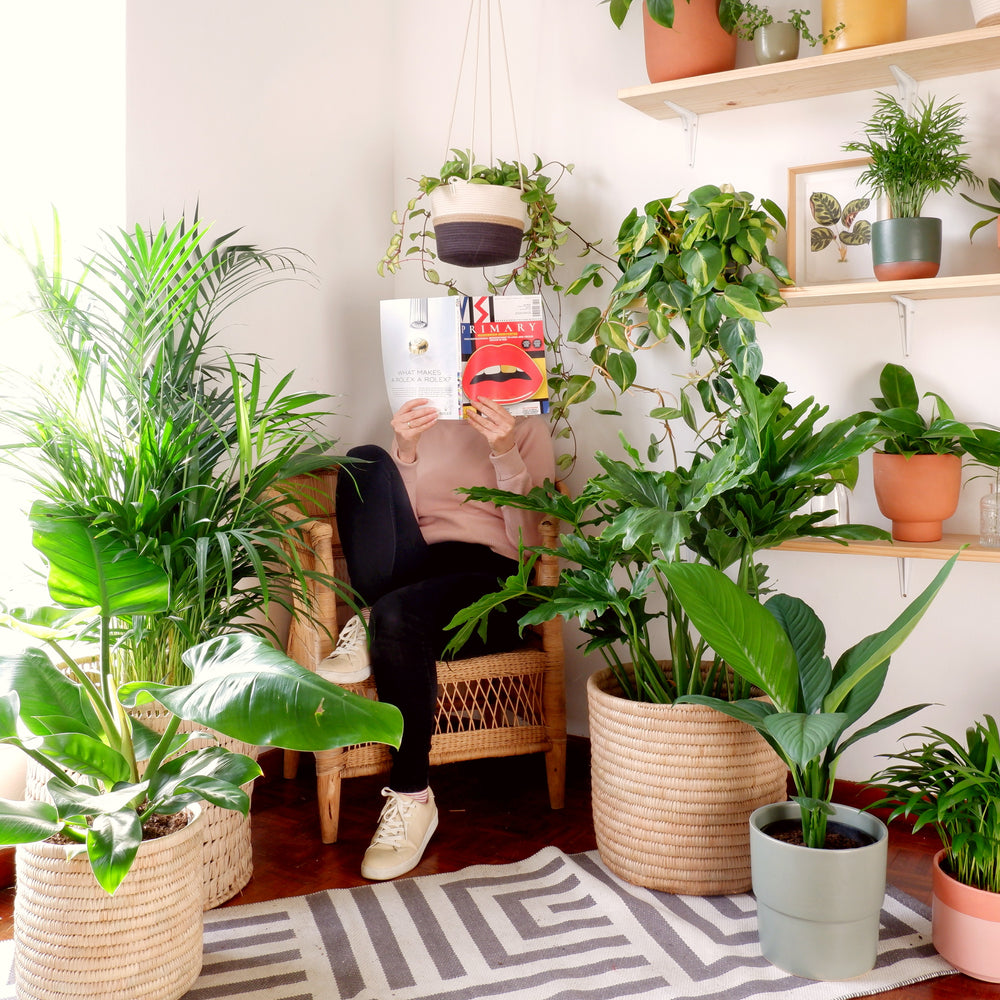Natal Ivy Care Instructions
Natal Ivy
Scientific name: Senecio Macroglossus
Synonyms: Flowering Ivy, Cape Ivy, Blomklimop & Natal Ivy
Natal ivies are strikingly beautiful specimens that climb and cascade where ever you place them and make fantastic hanging basket specimens, that in time will take over and create a faux canopy or green wall, without the damaging effects of English Ivy. Best of all is this is not a true Ivy at all but actually part of the daisy family, and in time will bloom pretty yellow flowers.
Endemic to South Africa, adds to their ease of care and Waterwise nature, as they are semi-succulent, to withstand the often dry conditions. They can also handle some direct sun but prefer a dappled shade position to thrive.
Toxicity: Considered to be slightly toxic.

Common Symptoms
- Mushy leaves and stems: This is an indication that your Natal Ivy is being overwatered, and rot has set in, remove any mushy foliage and stems with a sterile knife or scissors. These houseplants are semi-succulent and highly drought-tolerant, preferring their soil to dry out completely before each watering session. Also, be sure that your planter is draining correctly.
- Pale limp foliage: This is a clear sign that your Natal Ivy is dehydrated and needs a deep drink, soak in a bucket of water for 10 - 15 minutes to saturate the soil, and allow to drain freely when done. As much as these lovely plants are drought-tolerant, they still need consistent watering. Be sure to check your plant every 1 and a half to every 2 weeks for watering during hot weather and reduce during winter. It is best to water once your plant has reached complete dryness.
- Sparse vines: This is an indication that your Ivy is not receiving enough light. Especially if the spacing between leaves are far apart and the foliage is small. Natal Ivy prefers bright filtered light with 2 - 4 hours of direct sunlight. Relocate your plant to a brighter position if it is looking leggy. You can also trim back the plant to encourage full lush growth.
- Pests: Natal Ivy can be subject to Mealybug and aphid infestations if the air around your plant is kept far too humid. Mealybug look like patches of cotton wool on the plant, and aphids are often little green or black bugs that are often found on new growth. Rinse your plant to knock off as many of these little critters as possible and spray with an organic pesticide. Relocate to a less humid environment.
Care Instructions
- Origin: South Africa (Kwazulu Natal)
- Height: Can be maintained at 2 - 3 m indoors
- Light: Thrives in bright filtered light with 3 - 4 hours of direct sunlight.
- Water: It is best to allow the soil to dry out thoroughly before watering again.
- Humidity: Average room humidity is best.
- Temperature: Ideal temperatures range from 18°C - 26°C will tolerate higher temps.
- Soil: A well-draining potting mix is ideal. One can even use a 50-50 split of cactus mix and a more organic potting medium for best results.
- Fertilizer: Use a well balanced organic fertilizer once a month during Spring through Summer.
- Pruning: During Spring prune your Natal Ivy to encourage a more full appearance.
- Repotting: Natal Ivy has a fine root system, so does not need frequent repotting and can get relatively large in a small container. When repotting, choose a planter with good drainage that is a maximum of 5cm larger than the last planter. Avoid disturbing the roots as best as possible.
- Propagation: This can be achieved via cuttings. Choose a long healthy vine and cut it into 6 - 8cm lengths, remove lower foliage, leaving a bare stem of approximately 2 - 3cm. Press your cuttings into washed river sand, ensuring that the bare leaf nodes are covered. Place in a bright warm position and keep the soil slightly moist. Your plant is established when you tug on a stem and there is some resistance or new growth has formed. Treat as usual once established.
If in stock, shop for a Natal Ivy here




